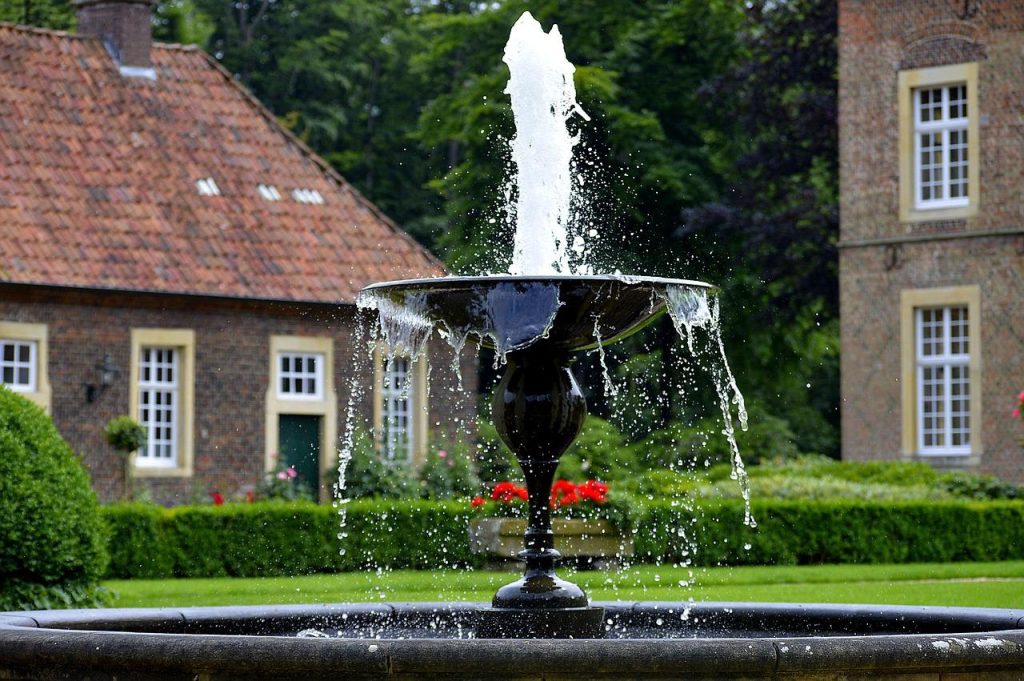
Water features add life to any landscape design and spruce up the outdoor area. Whether it’s the roar of the ocean waves, the serene lapping of water on a lake, or the rush of a stream, it can lead to an immediate serotonin rush and calm the mind. Hence, water features are an important part of landscape garden designs. Also, the top landscape architects in the city of Sacramento are very careful about adding water features that can create a calming oasis in the middle of your home exteriors where you can unwind after a long day.
Water features can be something elaborate like large ponds or as simple as a tabletop fountain. It can be a focal point in your backyard that draws attention or a background element. In this post, we will explore the various types of water features available that you can incorporate into your landscape design by the top landscape architects in Sacramento.
Types of Water Features
- Pools: These are structures made of concrete, fiberglass, or vinyl. Pools are used for swimming. You can also get smaller options like a plunge pool, spa, or lap pool. You may also opt for solely decorative pools as a cooling or reflective element in your garden.
- Ponds: These structures can be either artificial or natural. They are bodies of standing water used as a natural swimming pond or a decorative feature. They are more natural looking than pools and can support aquatic plants and wildlife like frogs, dragonflies, birds, and fish.
- Waterfall or Stream: These kinds of water features add drama and the sound of running water. You can get a range of sizes and materials to fit nearly any landscape, irrespective of budget.
- Fountain: Water fountains can be of many types. You can get anything from classic multi-tiered fountains to small tabletop models. Fountains can be either free-standing or part of a water wall. They can be powered by electricity or solar.
- Bubbler: Bubblers are sprinkler heads that gently percolate and can be incorporated into a fountain, in-ground installation, or ceramic pot.
- Rill: Rills are narrow channels made from stone, metal, or concrete with still or flowing water.
- Bird Bath: Bird baths are among the best ways to attract hummingbirds, songbirds, dragonflies, and other creatures to your yard.
- Rain Garden: This is a shallow depression in the landscape that catches and holds runoff water from rains. It is an extremely eco-friendly solution that allows percolation into the soil from where it is available to plants.
- Container: This is one of the easiest options for adding a water feature to your exteriors. The bowl can be made of stone, wood, ceramic, or metal. And the container may include wooden tubs, livestock troughs, or whiskey barrels.
- Combination: Some landscape designers may also add more than one water feature, like a waterfall combined with a pool or pond.
Choosing the Right Water Feature for Your Yard
When selecting a water feature for your exterior space, consider the following principles:
Scale
Determine your yard’s size and whether you want water to be the predominant or secondary theme. If your outdoors is spacious, you may have room for larger ponds and pools. However, it still needs to be scaled down even if you have enough room for plants. Pick a water feature that lies within the scale of your landscape so that it does not get lost in the design.
Function
Decide on your preferences, like whether you want to add a waterfall’s drama or a pond’s serenity. Also, consider the activities you would like to use your water feature for, like attracting wildlife, swimming, or as a decorative element.
Budget
Check out the costs of designs, materials, and installation, including the extra costs-like structures, walkways, rocks, decorative boulders, seating, sculpture, plans, and maintenance.
Installation
The complexity of the installation depends on the type of water feature you choose. Features like pools, streams, and waterfalls will need a pump, filtration system, plumbing, and access to a power and water source. Other heavy equipment is also required for digging the hole, putting down a liner, moving dirt, rocks, and boulders, and grading a hillside for a waterfall.
Maintenance
The maintenance of water features also plays an important role in the selection process. This is because water features require regular cleaning and care as they can develop harmful algae and attract mosquitoes. Before you decide on a water feature, find out how to keep it well-maintained and how much time and expense it will require.
Hire Professionals
Adding water features to your landscape design is a complex process and requires the right set of skills. So consult a landscape architect who can provide the best solutions for your water structure by considering various factors like location, access, sound, style, safety, and plants. These are important design considerations to keep in mind when planning landscape design with water features.